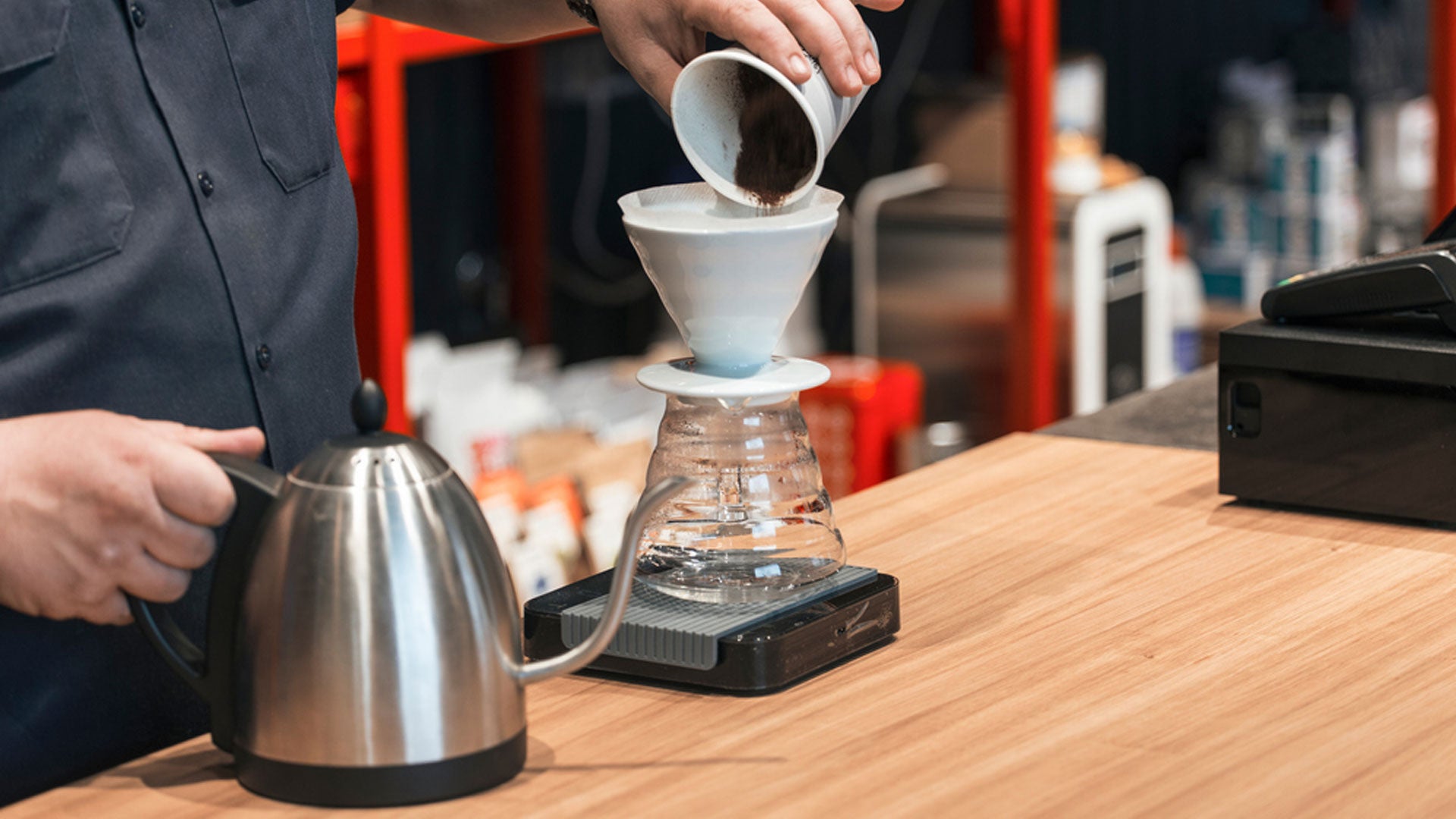Choose the coffee beans, the method of preparation, choose the right coarseness of grinding, discover the hardness of the water, and then think about whether to use a paper or permanent filter? Exactly. That's the magic of alternative coffee preparation methods. It's a never-ending ritual that, if you master it perfectly, you can use the coffee beans to the absolute maximum. And no, it's not that complicated. Thanks to our blog, you can learn a lot. So if you're still hesitating about choosing a method, for example, browse the blog posts. In this article, we will focus on the last point - we will solve the dilemma of whether to use permanent or disposable paper filters for drip coffee.
What are the types of coffee filters?
There are three in total and there is a different shape for each alternative preparation. Therefore, it is difficult to find a universal filter. There really is a lot to choose from. So before this step you should be 100% sure how you are going to prepare the coffee. It can be, for example, using a Haria V60, a Chemex or even an Aeropress. But there are really many methods, so it only depends on you, your taste and abilities.
Paper coffee filters
Paper filters are the most common. You can meet bleached and unbleached variants, but classic paper filters must not be missing in any quality cafe. They are easy to use and have many advantages.
- The filter captures absolutely all coffee particles and the drink is beautifully clean thanks to this,
- no oils get through it either,
- makes cleaning easier, as you can throw the filter straight into the bin together with the coffee,
- last but not least, it also affects the taste of the resulting coffee, which, thanks to the paper filter, is beautifully smooth and all the flavors stand out in it.
But what must you remember when using disposable paper filters? You should always rinse them with hot water before use, and those made from natural unbleached paper especially thoroughly. If you did not do this, the coffee could smell such a paper "tail" and thus spoil your enjoyment of the palette of flavors that you can get thanks to these filters when used correctly.

Metal permanent filters
If you think about sustainability, this option will probably interest you the most. You can also prepare coffee using stainless steel metal filters, which you rinse after each use and you're done. However, this option has its pros and cons.
- The stainless steel filter for drip coffee is ecological,
- easy to use, just knock the coffee beans into the basket and rinse the filter or put it in the dishwasher,
- when dripping, coffee oils also get into the resulting drink,
- when using a metal filter, the coffee has a fuller body and its taste is more pronounced,
- may also contain sediment.
With a metal filter, you simply cannot achieve as clean and delicate a drink as when using a paper filter. Some may find it annoying and others will seek it out again, so again it depends on your preferences.

Fabric filters
Are you traveling? Fabric filter will fit even in the smallest luggage and thanks to it you will be able to make coffee anywhere. It is light and beautifully storable, which are its biggest advantages.
- Fabric filters are also very ecological, with proper care they will last you a really long time,
- they are compact and light, therefore suitable for all coffee lovers on the go,
- partially passes oils and coffee dust,
- coffee dripped through a fabric filter is perfectly free of cloudiness,
- the main disadvantage is demanding care.
A fabric filter really has many advantages, but when it comes to cleaning it, you need to develop really consistent care. The filter must be washed and removed from all impurities. You should also not store it wet in closed luggage, so that it does not become stale or worse - moldy. Simply and simply, you need to take care of it and it will reward you with great coffee wherever you are.

Those were the three types of coffee filters and now it's up to you which one to choose. Give your sympathy or try which one will make your coffee taste the best.




Share:
Coffee courses at Coffee Source for beginners and advanced. What will you take away from them?
Barista scale: Which one to choose and how to use it afterwards?